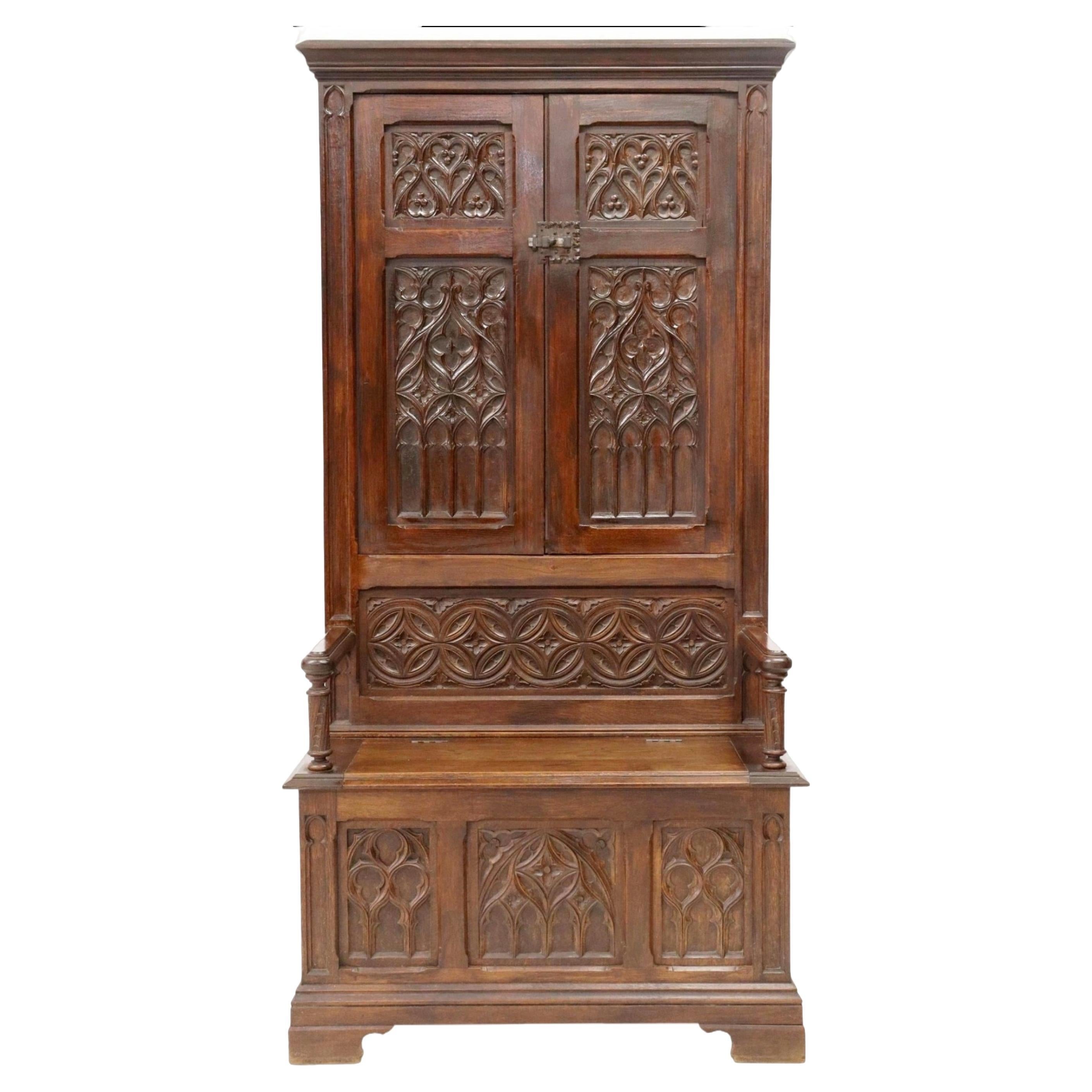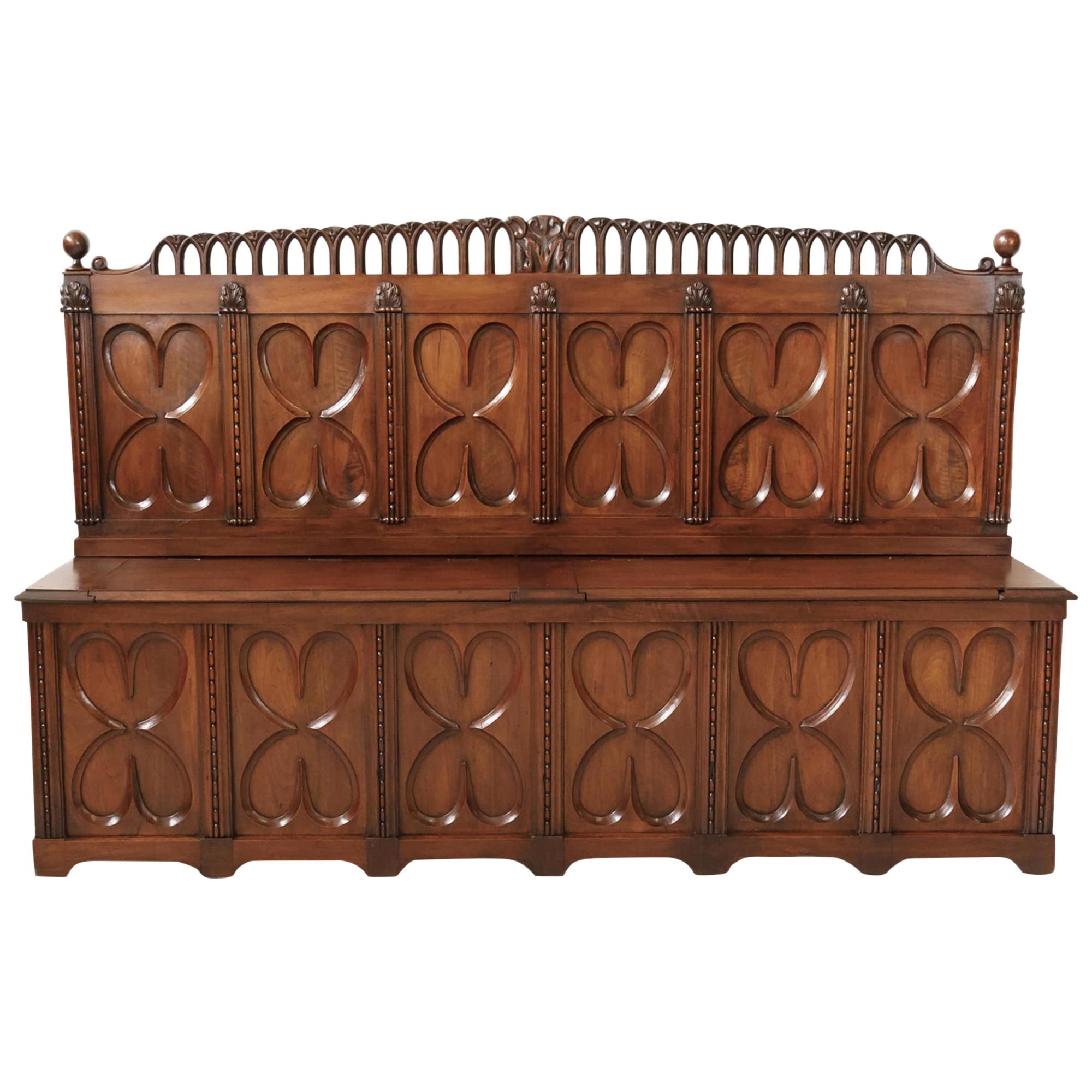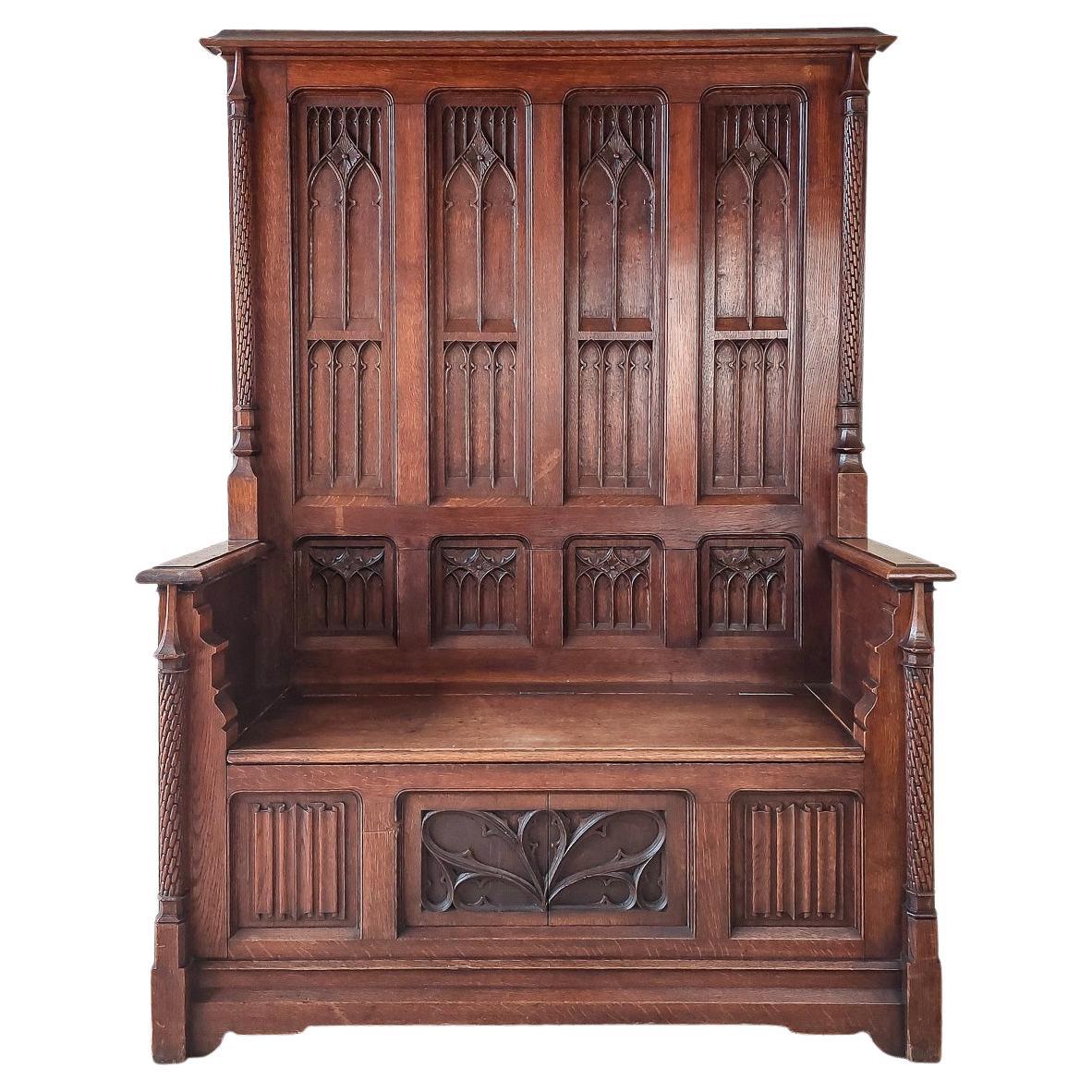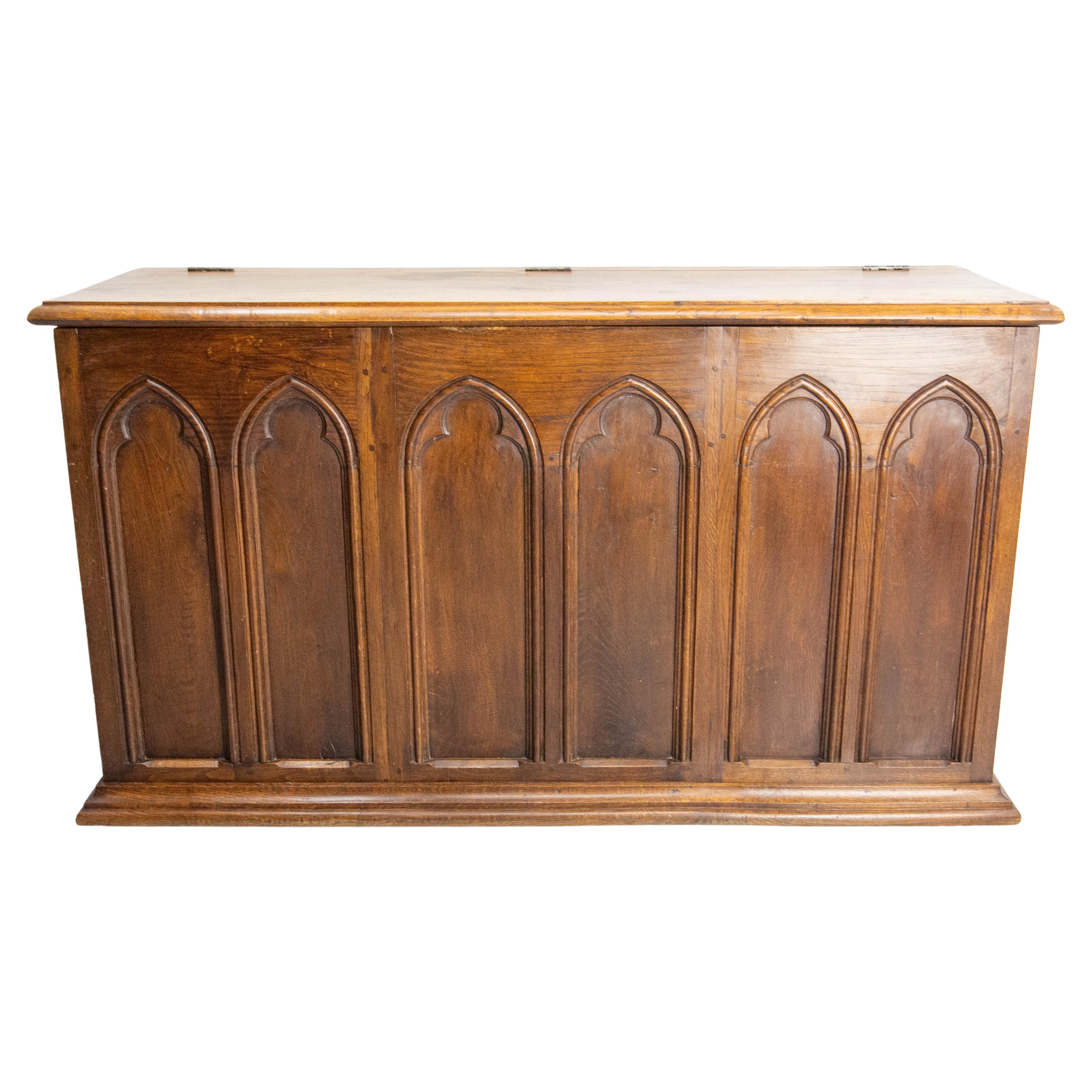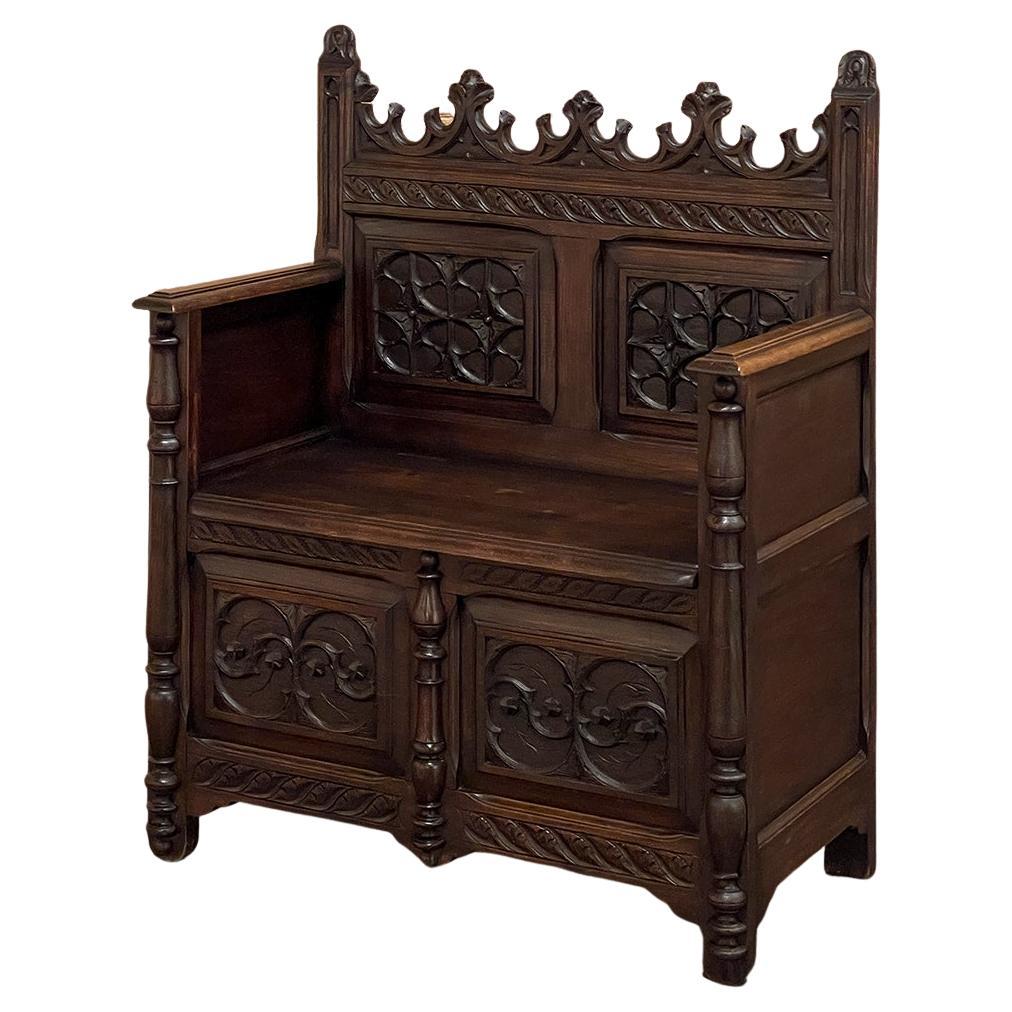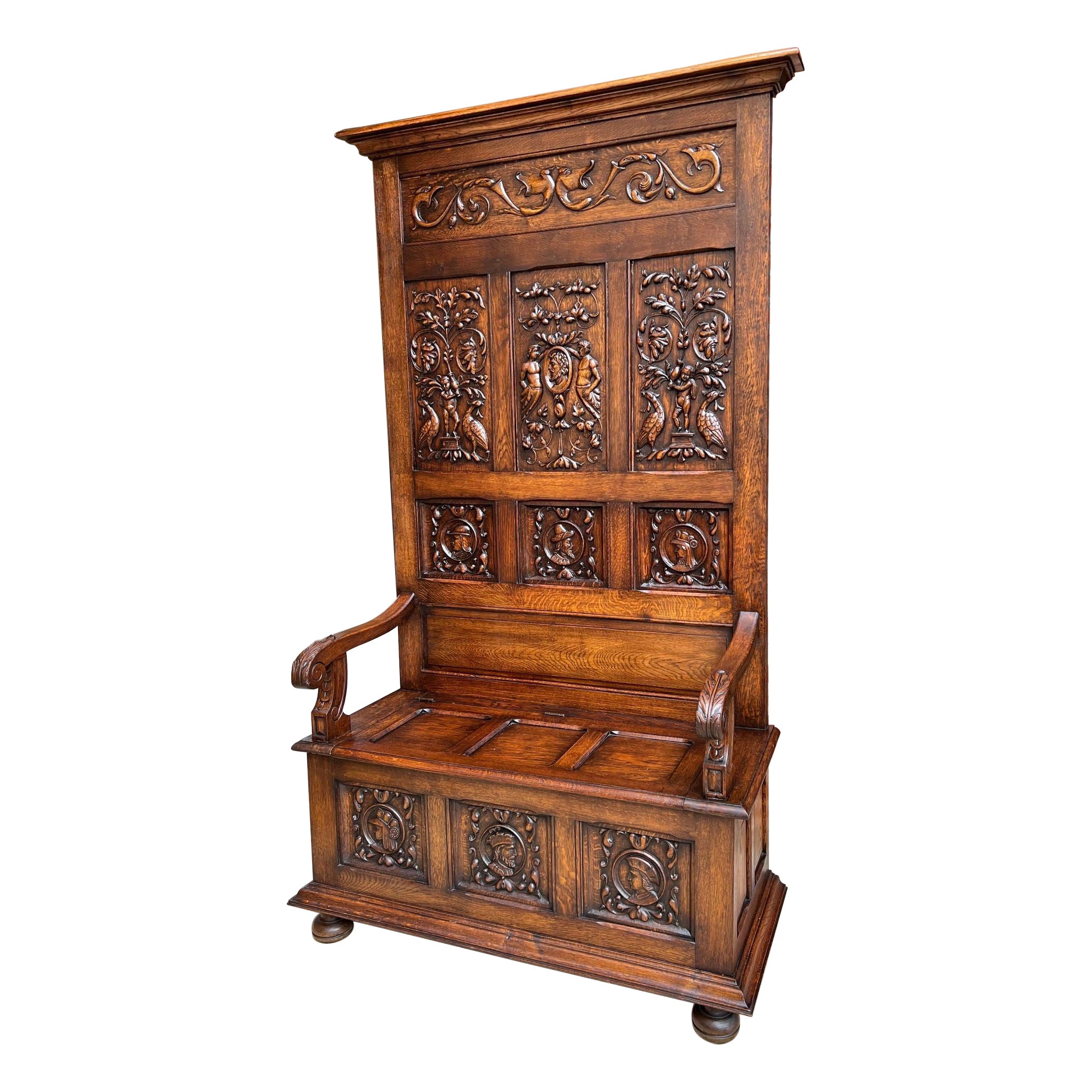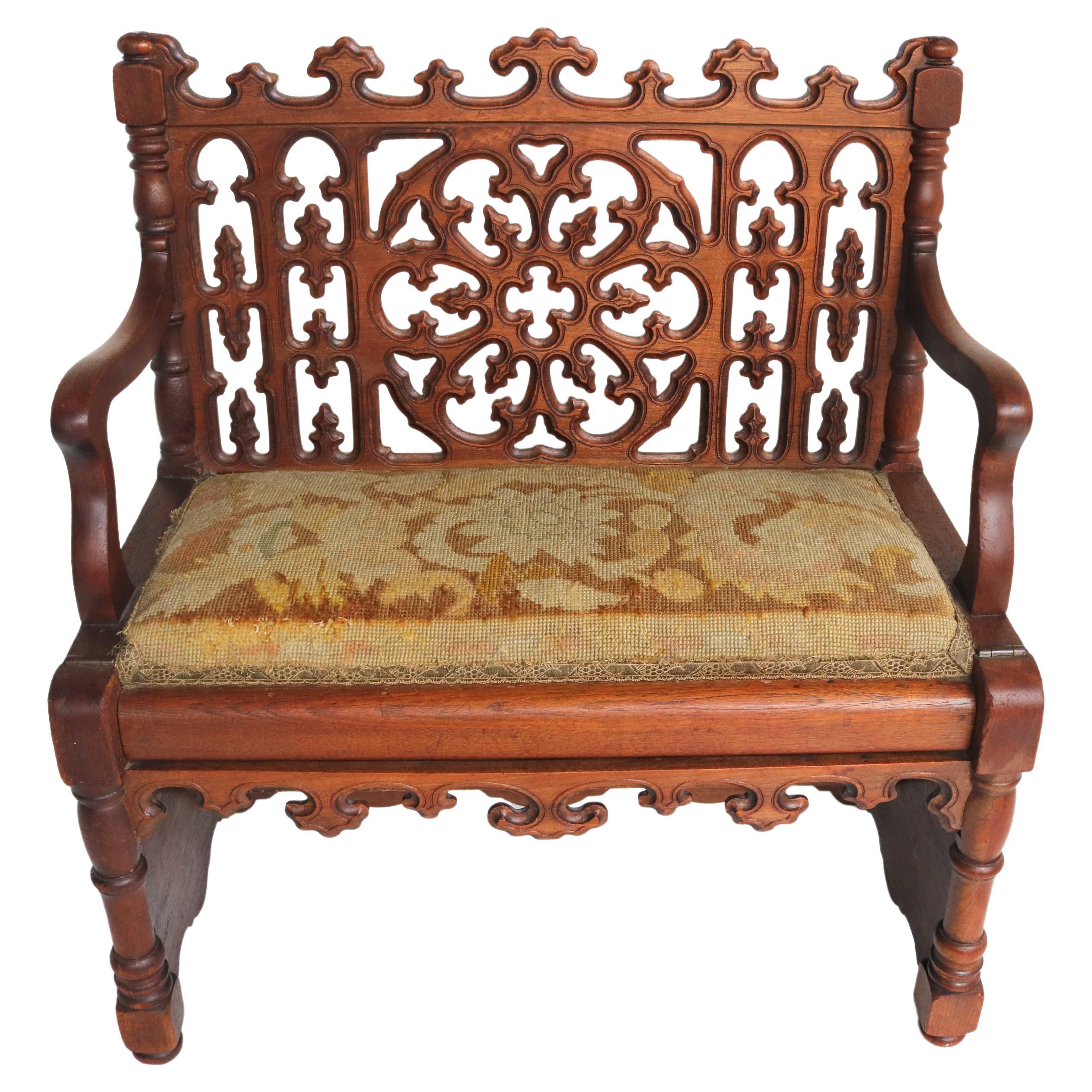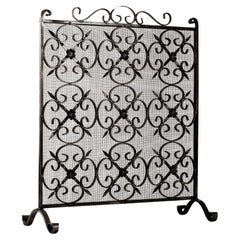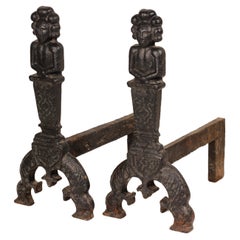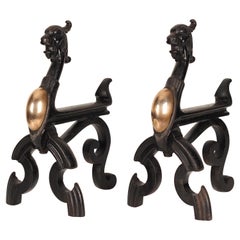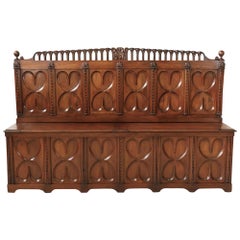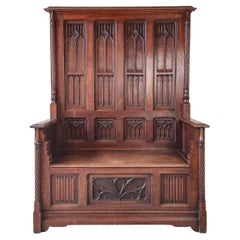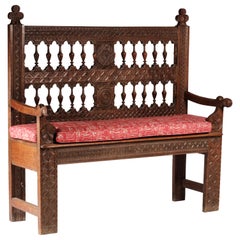
Hand Carved 19th Century French Gothic Revival Oak Hall Bench or Settle
View Similar Items
Want more images or videos?
Request additional images or videos from the seller
1 of 21
Hand Carved 19th Century French Gothic Revival Oak Hall Bench or Settle
About the Item
- Dimensions:Height: 47.05 in (119.5 cm)Width: 47.25 in (120 cm)Depth: 18.51 in (47 cm)Seat Height: 21.46 in (54.5 cm)
- Style:Gothic Revival (Of the Period)
- Materials and Techniques:
- Place of Origin:
- Period:
- Date of Manufacture:1870s
- Condition:Wear consistent with age and use. Minor losses. The item has been re waxed and polished. We have made a fabric covered cushion for the seat. French carved gothic bench Weight 30.2 kg Height 119.5cm x width 120 x depth 47cm Seat height with cushion 54.5cm x depth 38.5cm without cushion 47.5cm.
- Seller Location:London, GB
- Reference Number:1stDibs: LU2868329054472
About the Seller
5.0
Gold Seller
These expertly vetted sellers are highly rated and consistently exceed customer expectations.
Established in 2015
1stDibs seller since 2017
169 sales on 1stDibs
Typical response time: 1 hour
More From This SellerView All
- Hand forged Victorian gothic revival fire screen/spark guard late 19th CenturyLocated in London, GBDiscover the exquisite craftsmanship of our late 19th-century hand-forged and fire-welded Victorian Gothic Revival fire screen. This stunning piece features intricate scrollwork and ...Category
Antique 1890s English Gothic Revival Fireplaces and Mantels
MaterialsMetal, Steel
- Pair of 19th Century Victorian Gothic Iron Fire Dogs or AndironsLocated in London, GBA very large and heavy set of Victorian Gothic revival Fire dogs or Andirons made from Iron. Possibly modelled on a much earlier pair. The Victorian Gothic movement or Victorian Revi...Category
Antique 1850s English Gothic Revival Andirons
MaterialsIron
- 19th Century Victorian Gothic Fire Dogs or Andirons in the Shape of GriffinsLocated in London, GBA mid 19th century pair of zoomorphic Griffin Fire Dogs or Andirons. Made from cast Iron and with copper stomach inserts, these unusual and rare pieces are indicative of the Victoria...Category
Antique 1860s English Gothic Revival Andirons
MaterialsIron, Copper
- Boho Chic style 19th Century Hand Carved Wooden Moorish Octagonal TableLocated in London, GBAntique Ottoman side table made around the end of the 19th century from Northern Africa. An ornately carved geometric design with delicate Bone flowers in the Style of the Ottomans. ...Category
Antique 1890s North African Moorish Side Tables
MaterialsWood
- A pair of 19th Century carved Foo temple dogs or Chinese guardian LionsLocated in London, GBChinese guardian lions, or imperial guardian lions, are a traditional Chinese architectural ornament. Typically made of stone, they are also known as stone lions or shishi (石獅; shíshī). They are known in colloquial English as lion dogs or foo dogs / fu dogs. The concept, which originated and became popular in Chinese Buddhism, features a pair of highly stylized lions—often one male with a ball and one female with a cub—which were thought to protect the building from harmful spiritual influences and harmful people that might be a threat. Used in imperial Chinese palaces and tombs, the lions subsequently spread to other parts of Asia including Japan (see komainu), Korea, Philippines, Tibet, Thailand, Myanmar, Vietnam, Sri Lanka, Nepal, Cambodia, Laos, and Malaysia. There has been extensive interaction between Chinese mythology and Confucianism, Taoism, and Buddhism. Elements of pre-Han dynasty mythology such as those in Classic of Mountains and Seas were adapted into these belief systems as they developed (in the case of Taoism), or were assimilated into Chinese culture (in the case of Buddhism). Elements from the teachings and beliefs of these systems became incorporated into Chinese mythology. For example, the Taoist belief of a spiritual Paradise became incorporated into mythology as the place where immortals and deities used to dwell. Sometimes mythological and religious ideas have become widespread across China's many regions and diverse ethnic societies. In other cases, beliefs are more limited to certain social groups, for example, the veneration of white stones by the Qiang. One mythological theme that has a long history and many variations involves a shamanic world view, for example in the cases of Mongolian shamanism among the Mongols, Hmong shamanism among the Miao people, and the shamanic beliefs of the Qing dynasty from 1643 to 1912, derived from the Manchus. Politically, mythology was often used to legitimize the dynasties of China, with the founding house of a dynasty claiming a divine descent. Mythology and philosophy. Further information: Chinese philosophy True mythology is distinguished from philosophical treatises and theories. Elaborations on the Wu Xing are not really part of mythology, although belief in five elements could appear. The Hundred Schools of Thought is a phrase suggesting the diversity of philosophical thought that developed during the Warring States of China. Then, and subsequently, philosophical movements had a complicated relationship with mythology. However, as far as they influence or are influenced by mythology, divides the philosophical camps into two rough halves, a Liberal group and a Conservative group. The liberal group being associated with the idea of individuality and change, for example as seen in the mythology of divination in China, such as the mythology of the dragon horse that delivered the eight bagua diagrams to Fu Xi, and methods of individual empowerment as seen in the Yi Jing (Book of Changes). The Liberal tendency is towards individual freedom, Daoism, and Nature. The relationship of the Conservative philosophies to mythology is seen in the legendary Nine Tripod Cauldrons, mythology about the emperors and central bureaucratic governance, Confucianism, written histories, ceremonial observances, subordination of the individual to the social groups of family and state, and a fixation on stability and enduring institutions. The distinction between the Liberal and Conservative is very general, but important in Chinese thought. Contradictions can be found in the details, however these are often traditional, such as the embrace by Confucius of the philosophical aspects of the Yi Jing, and the back-and-forth about the Mandate of Heaven wherein one dynasty ends and another begins based according to accounts (some of heavily mythological) where the Way of Heaven results in change, but then a new ethical stable dynasty becomes established. Examples of this include the stories of Yi Yin, Tang of Shang and Jie of Xia or the similar fantastic stories around Duke of Zhou and King Zhou of Shang. Mythology exists in relationship with other aspects of society and culture, such as ritual. Various rituals are explained by mythology. For example, the ritual burning of mortuary banknotes (Hell Money), lighting fireworks, and so on. A good example of the relationship of Chinese mythology and ritual is the Yubu, also known as the Steps or Paces of Yu. During the course of his activities in controlling the Great Flood, Yu was supposed to have so fatigued himself that he lost all the hair from his legs and developed a serious limp. Daoist practitioners sometimes incorporate a curiously choreographed pedal locomotion into various rituals. Mythology and practice, one explains the other: in these rituals, the sacred time of Yu merges with the sacral practice of the present. Various ideas about the nature of the earth, the universe, and their relationship to each other have historically existed as either a background or a focus of mythologies. One typical view is of a square earth separated from a round sky by sky pillars (mountains, trees, or undefined). Above the sky is the realm of Heaven, often viewed of as a vast area, with many inhabitants. Often the heavenly inhabitants are thought to be of an "as above so below" nature, their lives and social arrangements being parallel to those on earth, with a hierarchical government run by a supreme emperor, many palaces and lesser dwellings, a vast bureaucracy of many functions, clerks, guards, and servants. Below was a vast under ground land, also known as Diyu, Yellow Springs, Hell, and other terms. As time progressed, the idea of an underground land in which the souls of the departed were punished for their misdeeds during life became explicit, related to developments in Daoism and Buddhism. The underground world also came to be conceived of as inhabited by a vast bureaucracy, with kings, judges, torturers, conductors of souls, minor bureaucrats, recording secretaries, similar to the structure of society in the Middle Kingdom (earthly China). Chinese temple Dogs...Category
Antique 1860s Chinese Chinese Export Sculptures and Carvings
MaterialsHardwood
- Mahogany Victorian 19th Century Minature or Apprentice Piece Crib/CottLocated in London, GBPeople like to use the term ‘apprentice pieces’ when referring to small pieces of miniature furniture,but more often than not this isn’t the case. But what is an apprentice piece and why are they often confused with miniatures? Here we aim to answer these questions! The majority of miniature furniture are in fact sample pieces used by travelling salesmen. Workshops would send out salesmen on lengthy country-wide tours, with a miniature of each piece on his sales cart. This meant the cabinet maker could use the smaller form to show off his skills, without the salesman having to carry a full size piece of furniture wherever he went. Using exactly the same skills and techniques as used on the full sized pieces, the miniatures offered a way of potential buyers being able to get a feel of the quality of goods the workshop produced, before committing to a purchase. Better than a flat ink drawing in a catalogue. A much smaller number of these miniatures are termed ‘apprentice pieces’. Apprentice pieces, although again a scaled down version of the workshops’ offerings, were made by an often inexperienced apprentice. They were given lesser quality materials to work with and the craftsmanship was often less refined. Antique miniature furniture...Category
Antique 1870s English Victorian Models and Miniatures
MaterialsMahogany
You May Also Like
- 19th Century French Neo-Gothic Carved Oak Hall Bench CabinetLocated in Forney, TXA scarce antique Gothic Revival French hand-carved oak hall bench with original nicely aged dark warm rich patina. circa 1870 Hand-crafted in France in the late 19th century, high-quality solid wood construction, rare form, having a tall double-door cabinet with carved tracery panels, iron slide bolt...Category
Antique Late 19th Century French Gothic Revival Benches
MaterialsOak
- 18th Century French Gothic Revival Period Walnut Settle or Hall Bench with LiftLocated in Birmingham, AL18th century French Gothic Revival period chateau settle with double lift seat handcrafted of solid old growth French walnut by talented artisans in Lyon, circa 1760s. This intricate...Category
Antique 1760s French Gothic Revival Benches
MaterialsWalnut
$6,675 Sale Price25% Off - 19th Century Neo-Gothic French Hand Carved Oak Hall BenchLocated in Baambrugge, NLA very attractive 19th century neo-gothic french hall bench made of oak with hand carved decorations. Beautifully carved with gothic details as pointed arches, columns and linnenfold...Category
Antique Late 19th Century French Gothic Benches
MaterialsOak
- 19th Century Chest or Coffer Carved Oak, French Gothic Revival StyleLocated in Labrit, LandesFrench coffer or chest assembled circa 1960 with panels made circa 1850. All All the walls of the trunk as well as the top are in carved oak and the bottom of the trunk is made of ...Category
Antique 19th Century French Gothic Revival Blanket Chests
MaterialsOak
- 19th Century French Gothic Hall Bench, CaquetoireLocated in Dallas, TX19th Century French Gothic hall bench ~ Caquetoire is a celebration of the style, rendered from beautiful walnut and commanding a stately pres...Category
Antique 1860s French Gothic Revival Benches
MaterialsWalnut
$3,184 Sale Price20% Off - Gothic Revival Oak Hall Bench, 1900sLocated in Amsterdam, NLMagnificent and rare Gothic Revival hall bench. Striking Dutch design from the 1900s. Solid oak with original hand-carved decorative elements. Original hand-carved decorative faces a...Category
Antique Early 1900s Dutch Gothic Revival Benches
MaterialsMetal
Recently Viewed
View AllMore Ways To Browse
Revival Used Furniture
Antique Revival Furniture
Oak Hall
What Is Antique Furniture
Antique Furniture Business
Antique Furniture Look Up
Antique Oak Hall
Eclectic Antique Furniture
French Carved Ornate
Carved Oak Gothic
19th Century French Gothic Furniture
Heavily Carved Oak
20th Century Hall Chair
19th Gothic Oak
Gothic Revival Carved
Used Furniture In Oxford
Carved Liked Oak
Antique Looking Fabric
